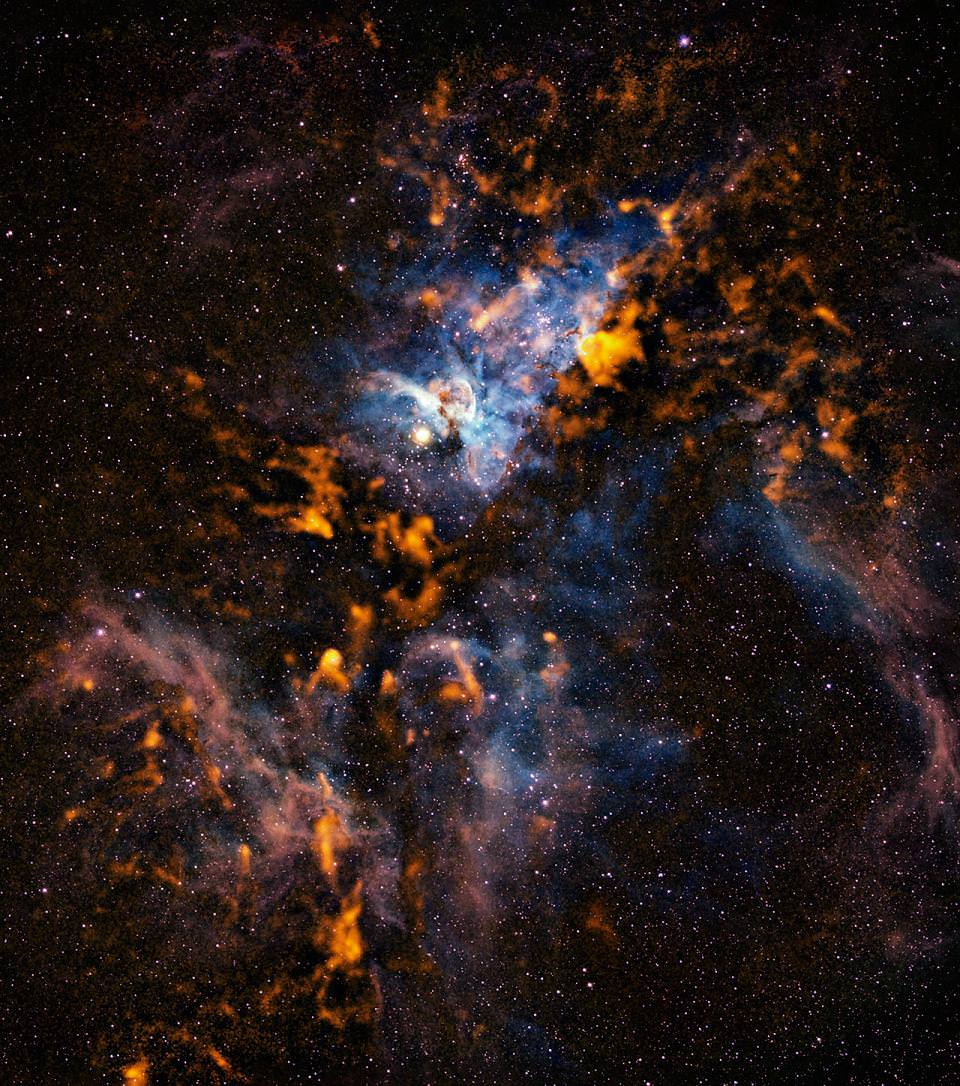[/caption]
It’s beautiful…. But it’s cold. By utilizing the submillimetre-wavelength of light, the 12 meter APEX telescope has imaged the frigid, dusty clouds of star formation in the Carina Nebula. Here, some 7500 light-years away, unrestrained stellar creation produces some of the most massive stars known to our galaxy… a picturesque petri dish in which we can monitor the interaction between the neophyte suns and their spawning molecular clouds.
By examining the region in submillimetre light through the eyes of the LABOCA camera on the Atacama Pathfinder Experiment (APEX) telescope on the plateau of Chajnantor in the Chilean Andes, a team of astronomers led by Thomas Preibisch (Universitäts–Sternwarte München, Ludwig-Maximilians-Universität, Germany), in close cooperation with Karl Menten and Frederic Schuller (Max-Planck-Institut für Radioastronomie, Bonn, Germany), have been able to pick apart the faint heat signature of cosmic dust grains. These tiny particles are cold – about minus 250 degrees C – and can only be detected at these extreme, long wavelengths. The APEX LABOCA observations are shown here in orange tones, combined with a visible light image from the Curtis Schmidt telescope at the Cerro Tololo Interamerican Observatory.
This amalgamate image reveals the Carina nebula in all its glory. Here we see stars with mass exceeding 25,000 sun-like stars embedded in dust clouds with six times more mass. The yellow star in the upper left of the image – Eta Carinae – is 100 times the mass of the Sun and the most luminous star known. It is estimated that within the next million years or so, it will go supernova, taking its neighbors with it. But for all the tension in this region, only a small part of the gas in the Carina Nebula is dense enough to trigger more star formation. What’s the cause? The reason may be the massive stars themselves…
With an average life expectancy of just a few million years, high-mass stars have a huge impact on their environment. While initially forming, their intense stellar winds and radiation sculpt the gaseous regions surrounding them and may sufficiently compress the gas enough to trigger star birth. As their time closes, they become unstable – shedding off material until the time of supernova. When this intense release of energy impacts the molecular gas clouds, it will tear them apart at short range, but may trigger star-formation at the periphery – where the shock wave has a lesser impact. The supernovae could also spawn short-lived radioactive atoms which could become incorporated into the collapsing clouds that could eventually produce a planet-forming solar nebula.
Then things will really heat up!
Original Story Source: ESO News Release.


Some of the things we are seeing is stuff out of science fiction. There is no words to explain .